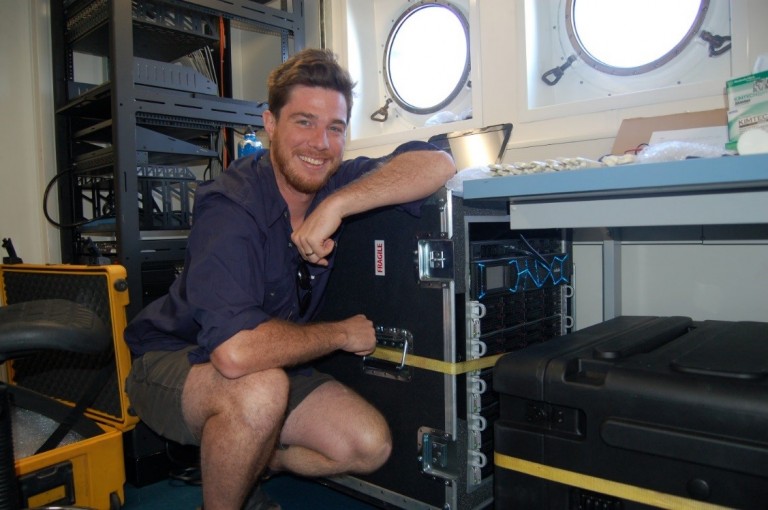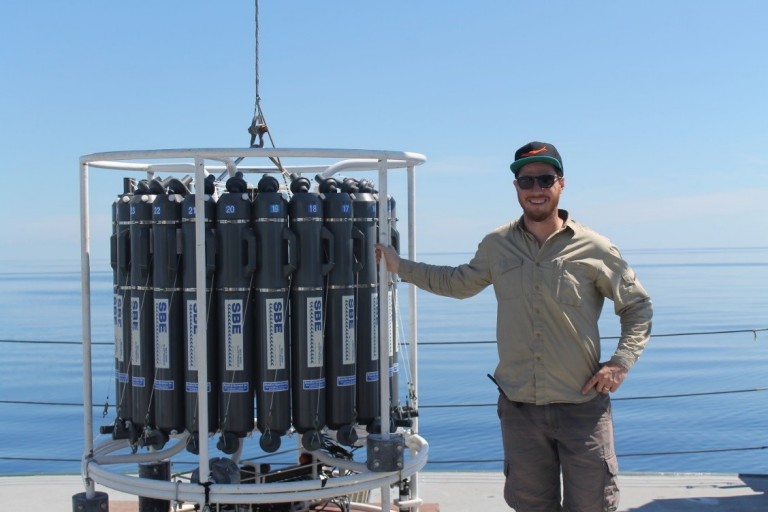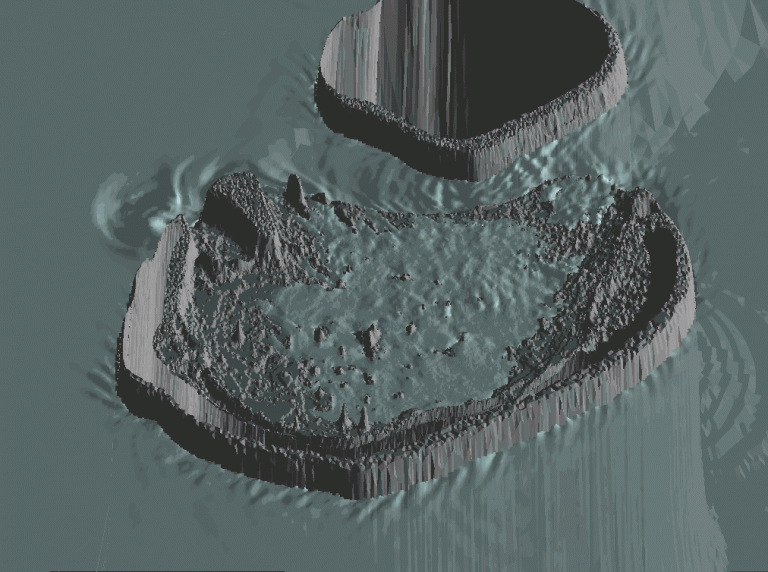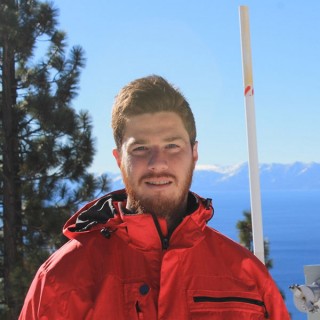“All models are wrong. Some models are useful” – George E.P. Box, Mathematician

Predicting the ocean physical environment – the tides, currents, water temperature, etc., requires a mathematical model capable of capturing the important physical processes. Luckily for us, Isaac Newton discovered many moons ago that force equals mass times acceleration that in turn led to a set of equations describing the flow of all fluids: the Navier-Stokes equations. Solving these equations requires a large computer and knowledge of the correct boundary conditions, which in this case are the tides, seafloor topography, and the wind.
Key Ingredients

On board Falkor, we have the correct ingredients for predicting the ocean environment at Scott Reef – a super-computer/desktop (“Nebula”), able Bulgarian IT support (who assures me that Nebula is Russian for old socks), a numerical model code that solves the equations (here I use the Stanford University SUNTANS code), and of course a quasi-able modeler. Traditionally these ingredients do not mix well, but we decided to try anyway.
Reef predictions
In between episodes of staring out the porthole, I have been predicting the currents and water temperature around Scott Reef using the onboard supercomputing facilities. Data from this model, plus some traditional shore-based modelling, have been used to aid our field sampling strategy. At Scott Reef, the tides drive nutrient rich cold water into the lagoon influencing all life there (or at least this is what we are trying to determine). Given that a ship is only capable of sitting in one place at a time, we have been using the model predictions to tell us when and where in the reef to sample, kind of like using a weather model to tell us whether to go outside if it’s raining or not. To see the model generated, click on the image above. Given the transient nature of the tides and “tidal pumping” of cold water into the reef system, correct timing and placement is crucial. So far the predictions have been reasonably successful leading to many a statement being prefaced with “As predicted…”.
So one may ask what business a computational modeler and his/her model has on board a research vessel doing real oceanography, it turns out some models are actually useful… despite being wrong.


